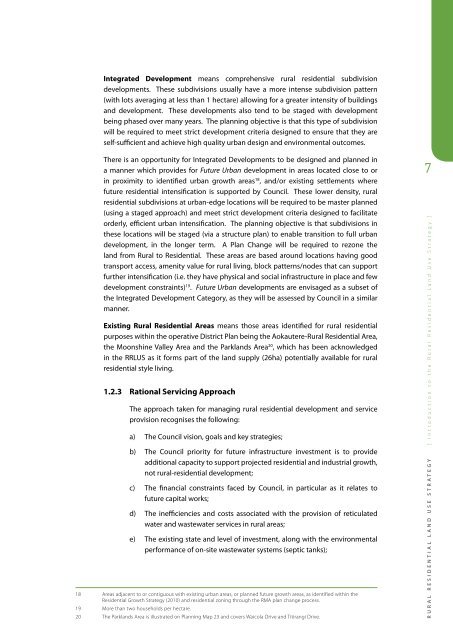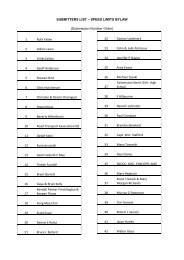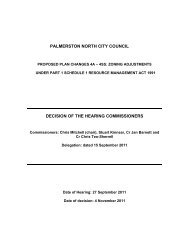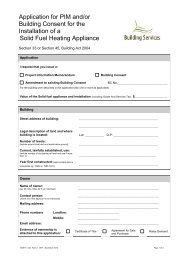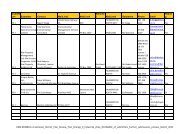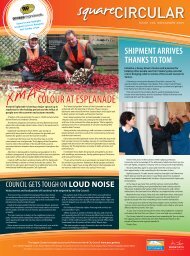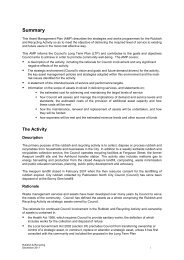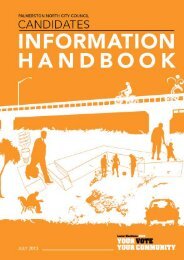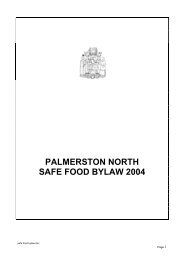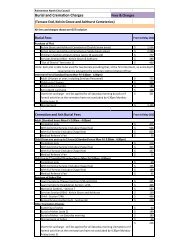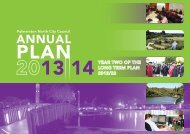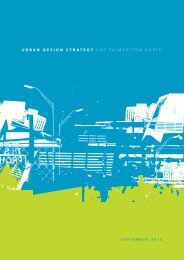Rural Residential Land Use Strategy - Palmerston North City Council
Rural Residential Land Use Strategy - Palmerston North City Council
Rural Residential Land Use Strategy - Palmerston North City Council
You also want an ePaper? Increase the reach of your titles
YUMPU automatically turns print PDFs into web optimized ePapers that Google loves.
Integrated Development means comprehensive rural residential subdivision<br />
developments. These subdivisions usually have a more intense subdivision pattern<br />
(with lots averaging at less than 1 hectare) allowing for a greater intensity of buildings<br />
and development. These developments also tend to be staged with development<br />
being phased over many years. The planning objective is that this type of subdivision<br />
will be required to meet strict development criteria designed to ensure that they are<br />
self-sufficient and achieve high quality urban design and environmental outcomes.<br />
There is an opportunity for Integrated Developments to be designed and planned in<br />
a manner which provides for Future Urban development in areas located close to or<br />
in proximity to identified urban growth areas 18 , and/or existing settlements where<br />
future residential intensification is supported by <strong>Council</strong>. These lower density, rural<br />
residential subdivisions at urban-edge locations will be required to be master planned<br />
(using a staged approach) and meet strict development criteria designed to facilitate<br />
orderly, efficient urban intensification. The planning objective is that subdivisions in<br />
these locations will be staged (via a structure plan) to enable transition to full urban<br />
development, in the longer term. A Plan Change will be required to rezone the<br />
land from <strong>Rural</strong> to <strong>Residential</strong>. These areas are based around locations having good<br />
transport access, amenity value for rural living, block patterns/nodes that can support<br />
further intensification (i.e. they have physical and social infrastructure in place and few<br />
development constraints) 19 . Future Urban developments are envisaged as a subset of<br />
the Integrated Development Category, as they will be assessed by <strong>Council</strong> in a similar<br />
manner.<br />
Existing <strong>Rural</strong> <strong>Residential</strong> Areas means those areas identified for rural residential<br />
purposes within the operative District Plan being the Aokautere-<strong>Rural</strong> <strong>Residential</strong> Area,<br />
the Moonshine Valley Area and the Parklands Area 20 , which has been acknowledged<br />
in the RRLUS as it forms part of the land supply (26ha) potentially available for rural<br />
residential style living.<br />
1.2.3 Rational Servicing Approach<br />
The approach taken for managing rural residential development and service<br />
provision recognises the following:<br />
a) The <strong>Council</strong> vision, goals and key strategies;<br />
b) The <strong>Council</strong> priority for future infrastructure investment is to provide<br />
additional capacity to support projected residential and industrial growth,<br />
not rural-residential development;<br />
c) The financial constraints faced by <strong>Council</strong>, in particular as it relates to<br />
future capital works;<br />
d) The inefficiencies and costs associated with the provision of reticulated<br />
water and wastewater services in rural areas;<br />
e) The existing state and level of investment, along with the environmental<br />
performance of on-site wastewater systems (septic tanks);<br />
18 Areas adjacent to or contiguous with existing urban areas, or planned future growth areas, as identified within the<br />
<strong>Residential</strong> Growth <strong>Strategy</strong> (2010) and residential zoning through the RMA plan change process.<br />
19 More than two households per hectare.<br />
20 The Parklands Area is illustrated on Planning Map 23 and covers Waicola Drive and Titirangi Drive.<br />
7<br />
RURAL RESIDENTIAL LAND USE STRATEGY [ Introduction to the <strong>Rural</strong> <strong>Residential</strong> <strong>Land</strong> <strong>Use</strong> <strong>Strategy</strong> ]


